Yacon: An unknown treasure out from the soil.
Who wouldn’t want to be fit and healthy without spending that much? Who wouldn’t want to eat something that can be good for the body, without getting their pockets empty?
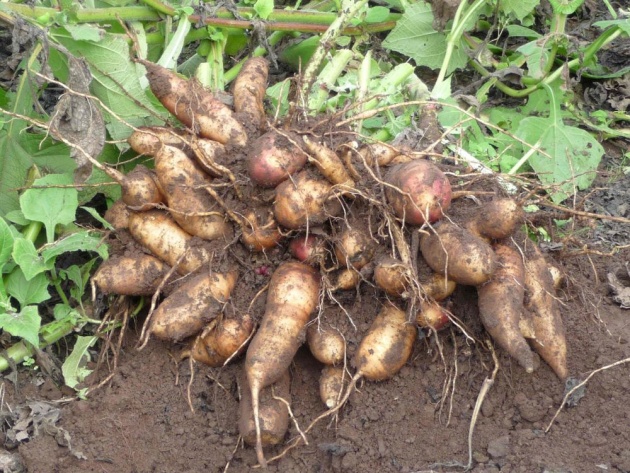
This is yacon
*Image is credited to herbsnatura
Looking at the photo above, you may wonder, what are those root crops? Are they potatoes, or sweet potatoes? Let me tell you what are they.
Last weekend, I went out to the Kannawidan Festival area to buy something, a root crop that I know it came from the booth from one of the upland municipality of Ilocos Sur. Since I forgot its name, I didn’t find it, instead I bought some natural teas from different booths.
Then I saw a posted picture of a celebrity I have been following on Instagram, I wrote down the name for me to remember it. After writing a comment, I read some that were posted and I have learned that there are still many people who are clueless with this root crop.
After my bank transaction this week, I went back to Kannawidan Festival area and indeed found what I have been looking for. There I met a friend, who was clueless with what did I buy. Same thing when I posted the photo of this root. And it made me write something about this precious root crop named Yacon or the Peruvian Ground Apple.
What is Yacon?
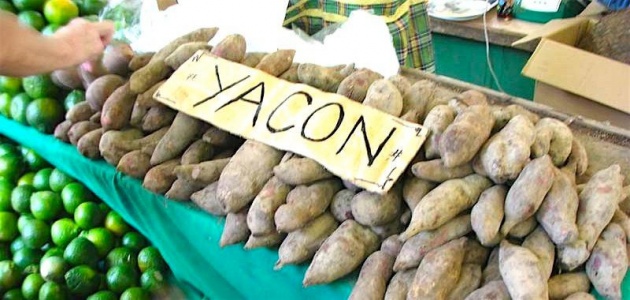
*Image is credited to greenblender
Yacon is being commonly called in Ecuador as jicama and even confused with a bean plant. But is it not even close. Yacon looks like a sweet potato or a potato or even the taro roots, after peeling it, there is the similarity like a turnip with a texture same as a pear or an apple, with a sweet taste and a smell that is close to a mango specie.
This wonderful Yacon is a close relative of the sunflower and Jerusalem artichoke. It is a species of perennial daisy traditionally grown in the northern and central Andes from Colombia to northern Argentina for its crisp, sweet-tasting, tuberous roots.
Unknown to many, this edible roots are not just inexpensive, they are also easy to prepare and eat.
Yacon: How to prepare and eat it?
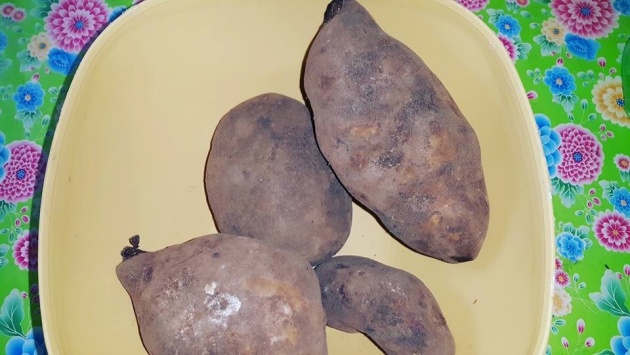
These are the yacons that I bought
*Image is credited to Rain Tajon
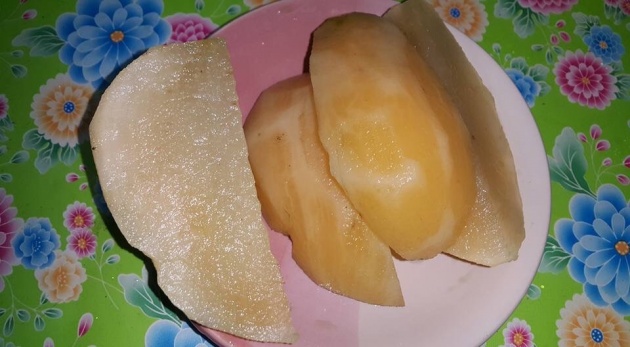
These are sliced yacon
*Image is credited to Rain tajon
These roots won’t take too much of time in preparing before we can eat it.
What I usually do is just wash and peel them then cut or well just take a bite. Yes, we can eat it raw, as simple as that. It can also be added some acid like lemon or calamansi to avoid discoloration. Though some said that they can sauté in oil. And I even saw one baking the root.
As simple and as easy as that, and not to mention it is healthy too.
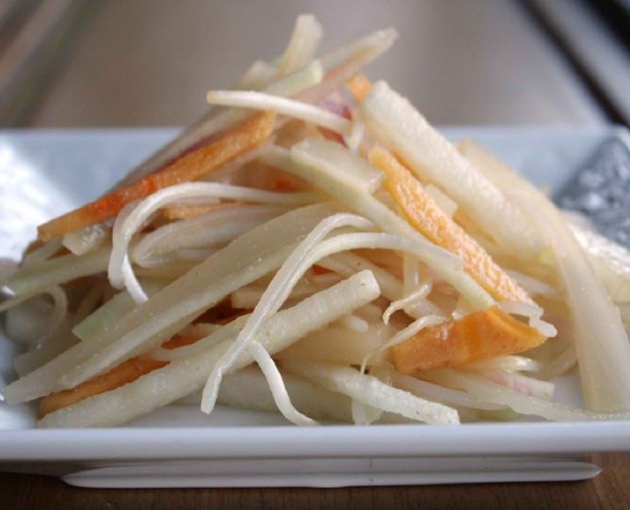
Yacon Root Salad
*Image is credited to chalkboardmag
Yacon: Its health benefits.
Yacon are mostly composed of fructooligosaccharides and water. This means that the majority of the carbohydrate sugars cannot be digested by the body, resulting in a very low-calorie level and a prevention of excess sugar coming into the bloodstream. Yacon also helps the body increase its vitamin and mineral absorption of all other foods, so while there aren’t many vitamins and minerals in yacon itself, it is very important for the intake of these essential components of human health. That being said, yacon is still rich in potassium, calcium, and phosphorous.
With everything that is packed in this wonderful root, its health benefits are definitely cannot be set aside.
1. Prevents diabetes. The reason that so many people around the world have begun to use yacon so often is its anti-hyperglycemic effects. The fructooligosaccharides in yacon mean that the body does not absorb any simple sugars; in fact, it lowers the amount of glucose production in the liver and causes a shift to lower fasting glucose rates. Surely this root should be a staple in our kitchen since we have history with diabetes.
2. Regulates blood pressure. There are a number of heart-healthy aspects to yacon, but the high levels of potassium are certainly worth mentioning first. Potassium is a vasodilator, meaning that it relaxes blood vessels and reduces strain on the cardiovascular system.
3. Improves the digestive health. Yacon also contain prebiotic materials, stimulating the growth and health of the microflora in our bodies. When our probiotic bacteria are well-taken care of and healthy, our body can maximize its intake of vitamins and minerals. Constipation will be gone with just munching Yacon. Just like yakult that I drink every day.
4. Weight loss. With most body conscious, now going to the gym or go on diet just to shed some pound. Yacon is not starchy like the other roots. This can also be caused by the slight laxative effect of yacon (perhaps due to its fiber content) and the increased satiety that people feel after eating this sweet plant.
Yacon in the Philippines.
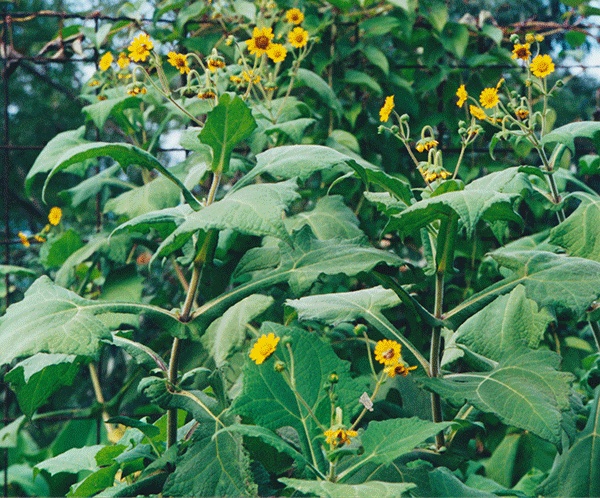
Yacon flower
*Image is credited to earthwisegardening
Here in the Philippines, I have learned that Yacon is locally grown by farmers from the Municipality of Cervantes, Ilocos Sur, and claimed that they are organic. But it was introduced in Nueva Vizcaya and Baguio City in the early 2000 by a Japanese businessman. This eventually started the spread of yacon production in northern Philippines. Yacon is typically cultivated in an altitude of 1,500 to 2,500 meters above sea level, hence the area where they are being grown.
For those who are living far from those said areas of the country, there is a store that sells and delivers yacon, and it is the store whom I got a little chat with on Instagram and it is “Kajuayan”(you can find them on facebook too), hence the inspiration to write about this wonderful edible root.
Aside from that, there were research (Benguet State University) to look more for what they can do with yacon, from planting to its byproducts like vinegar, wine and pickles. I would love the pickled ones for I always love to munch them.
With this, hope I am spreading a great news for those who are looking for an alternative in living healthy.
Here is a video to tell you more about yacon.
*Video is credited to Wall Street Journal via youtube
You can try this querlo chat...



